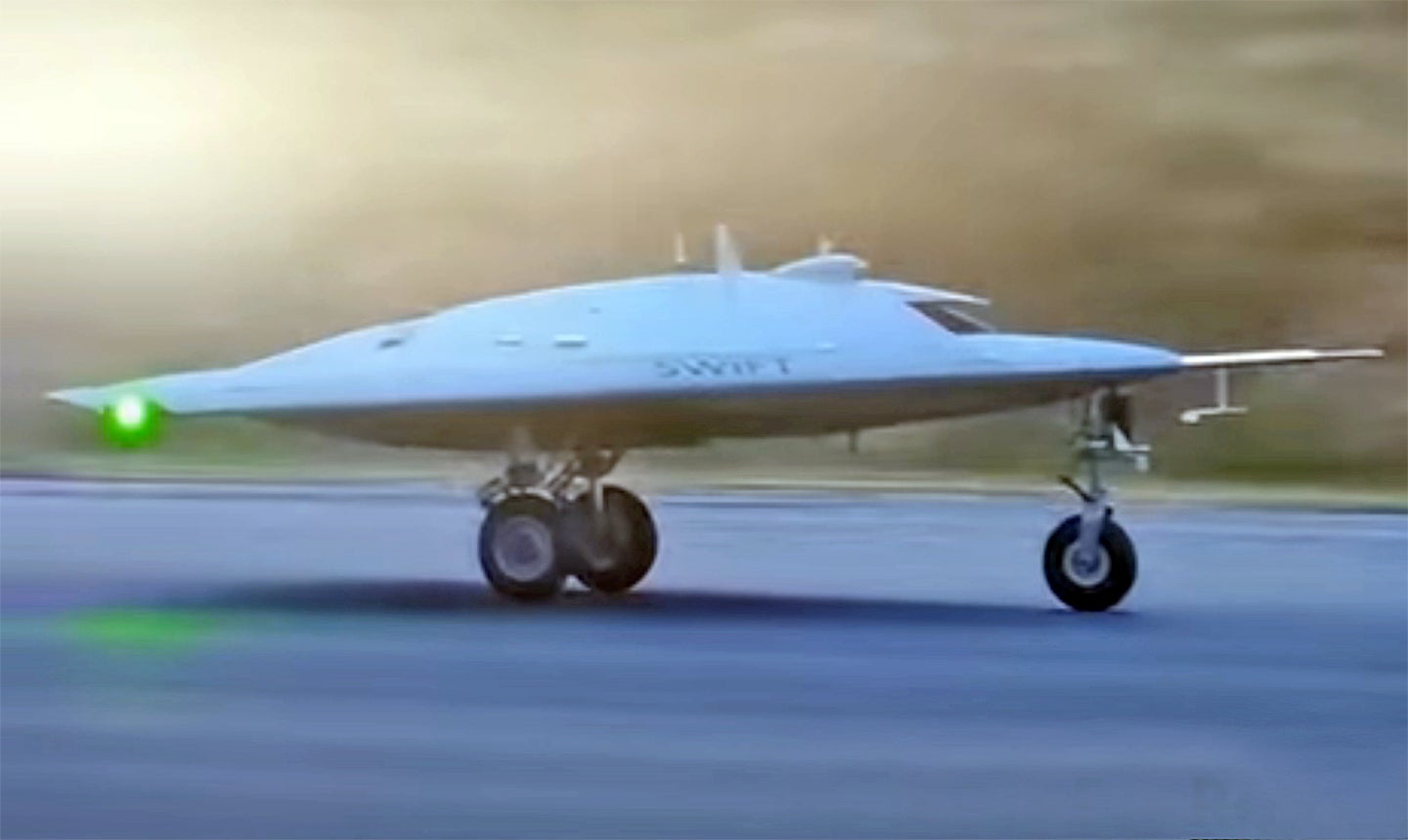India’s unmanned combat air vehicle (UCAV) subscale drone demonstrator has appeared for the first time, revealing details of the flying wing design. The unmanned aerial vehicle, known as the SWiFT, is intended to serve as a proof-of-concept for a planned production combat drone, the Ghatak, which is reportedly being developed primarily as an unmanned strike aircraft.
Photos and video of the SWiFT — which stands for Stealth Wing Flying Testbed — appeared yesterday, apparently showing taxi trials of the demonstrator drone that were likely conducted at the Chitradurga Aeronautical Test Range in the southern state of Karnataka, in mid-August. So far, there has been no official statement from the Indian Ministry of Defense or from the Defense Research and Development Organization (DRDO), the latter of which is in overall charge of the project.

In terms of appearance, the SWiFT corresponds, broadly, with previous artist’s concepts and scale models of the drone and, more generally, of those of the Ghatak, with which it shares a flying-wing planform and an engine intake located above the forward fuselage. While the trailing edge of the drone is difficult to make out, it appears to have a classic tailless flying wing profile, providing an overall arrowhead shape, rather than the highly cranked wing found on other stealthy drones, such as the Northrop Grumman X-47B. Its trailing edge is less swept than other designs, like Russia’s S-70, for instance.
In terms of size, the SWiFT is estimated to be around 13 feet long, with a wingspan of somewhat over 16 feet, and is thought to weigh approximately 2,300 pounds.
The landing gear on the SWiFT is notably large, likely a reflection of this being essentially a scaled-down demonstrator for the Ghatak, rather than a full-size UCAV in its own right. Previous concept artwork suggested that the drone would incorporate some kind of internal weapons bay, although whether that has been included on this smaller demonstrator is unclear. An array of aerials and a sensor fairing can be seen on top of the fuselage, but these are certainly related to test work rather than being mission-optimized.
The powerplant for the SWiFT is understood to be a Russian-made NPO Saturn 36MT, a small turbofan otherwise used to power cruise missiles. A view of the drone from the rear suggests that, unlike the Okhotnik in its current form, the design seems to include some kind of shrouded engine exhaust, which would reduce infrared and radar signature from this aspect. Low-observable exhausts can be among the most challenging aspects of stealthy designs like this.
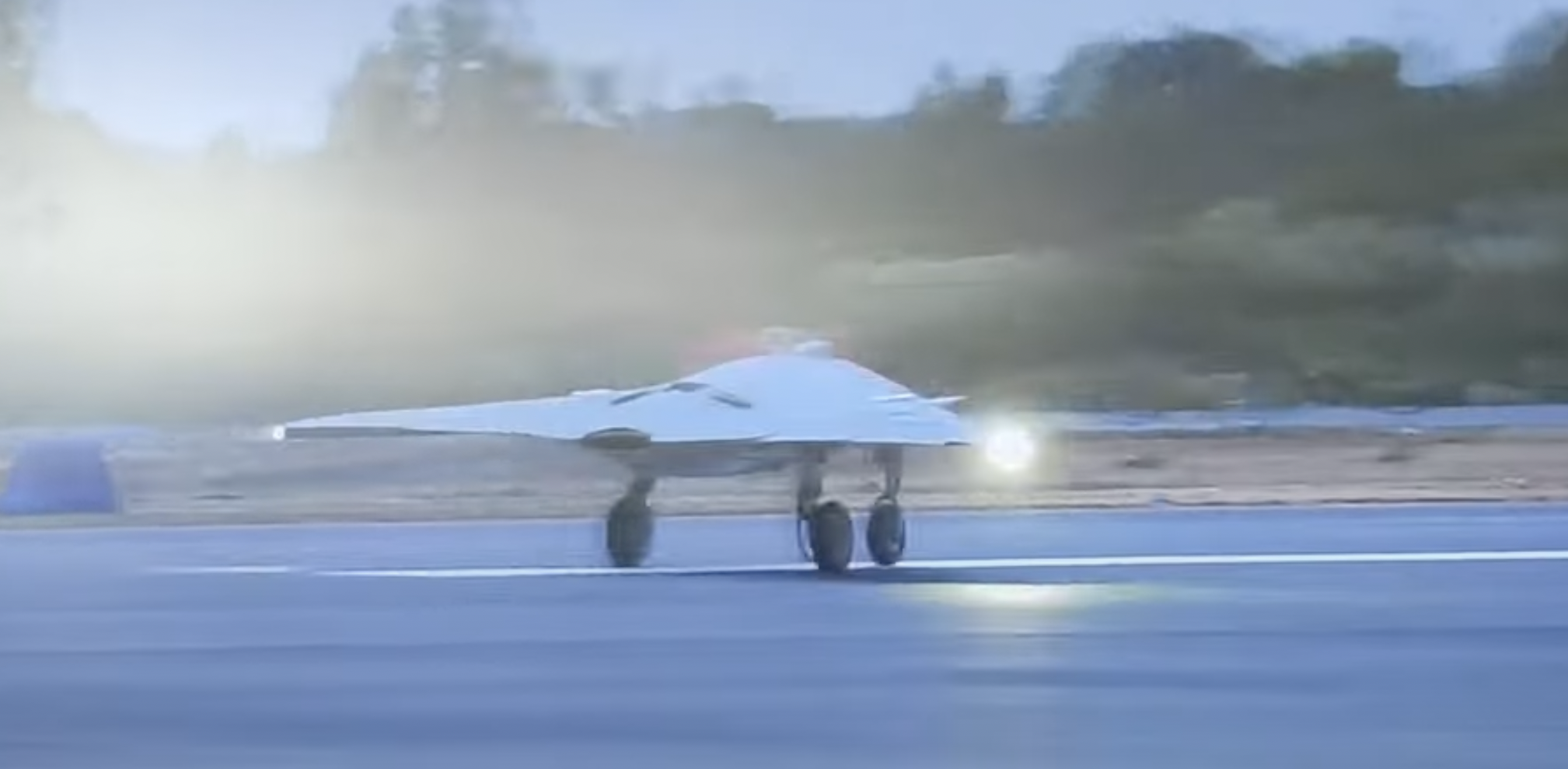
What little we know about the highly classified SWiFT and the Ghatak programs comes from unofficial Indian accounts, of which those from the Livefist defense website appear to be the most authoritative, but which are also based on off-the-record statements and involve a degree of speculation.

Livefist first revealed the existence of the Ghatak program more than a decade ago and, in 2018, published images showing a six-foot scale model of the SWiFT at the Indian Institute of Technology in Kanpur, or IIT-K. This organization is responsible for much of the basic research into these flying wing drones, working alongside the government’s Aeronautical Development Establishment (ADE) in Bengaluru.
Back in 2018, it was reported that the SWiFT could make its first flight in 2019 or 2020, but that has clearly been pushed back — a reflection, perhaps, of the considerable ambition behind a program that seeks to provide India with a stealthy unmanned combat air vehicle with an emphasis on extended-range strike capabilities, a class of UAV beyond the reach of all but the leading aerospace powers.
Livefist provided the following account of the kinds of mission that the future Ghatak drone might be expected to undertake:
In the broadest sense, the Ghatak is intended to be an aircraft launched covertly near or over hostile territory, evading enemy sensors by virtue of its stealth, and destroying identified targets with air-to-ground weapons. In a broader sense, such stealth could also be used to gather electronic intelligence or covertly conduct airborne surveillance. Primarily though, the Ghatak is simply being developed as an unmanned bomber.
It’s been reported that the planned Ghatak drone will be around eight times the size of the SWiFT, although it’s not clear if this is in terms of dimensions or weight. A wingspan eight times larger than that of the SWiFT would be in the region of 128 feet, making it roughly twice the size of the Okhotnik. Manufacturing a production drone so much bigger than this initial concept demonstrator would be an enormous undertaking just in terms of process, and there is no guarantee that the Indian aerospace industry will be capable of making that leap, at least without any kind of incremental steps along the way. Furthermore, the aircraft’s engine layout and its overall design are not evidentiary of that size of an aircraft. It is far more likely that Ghatak’s size will end up being scaled up accordingly, bringing it more in line with designs like the Okhotnik and other UCAV concepts, or even a bit smaller or even larger based on the IAF’s requirements.
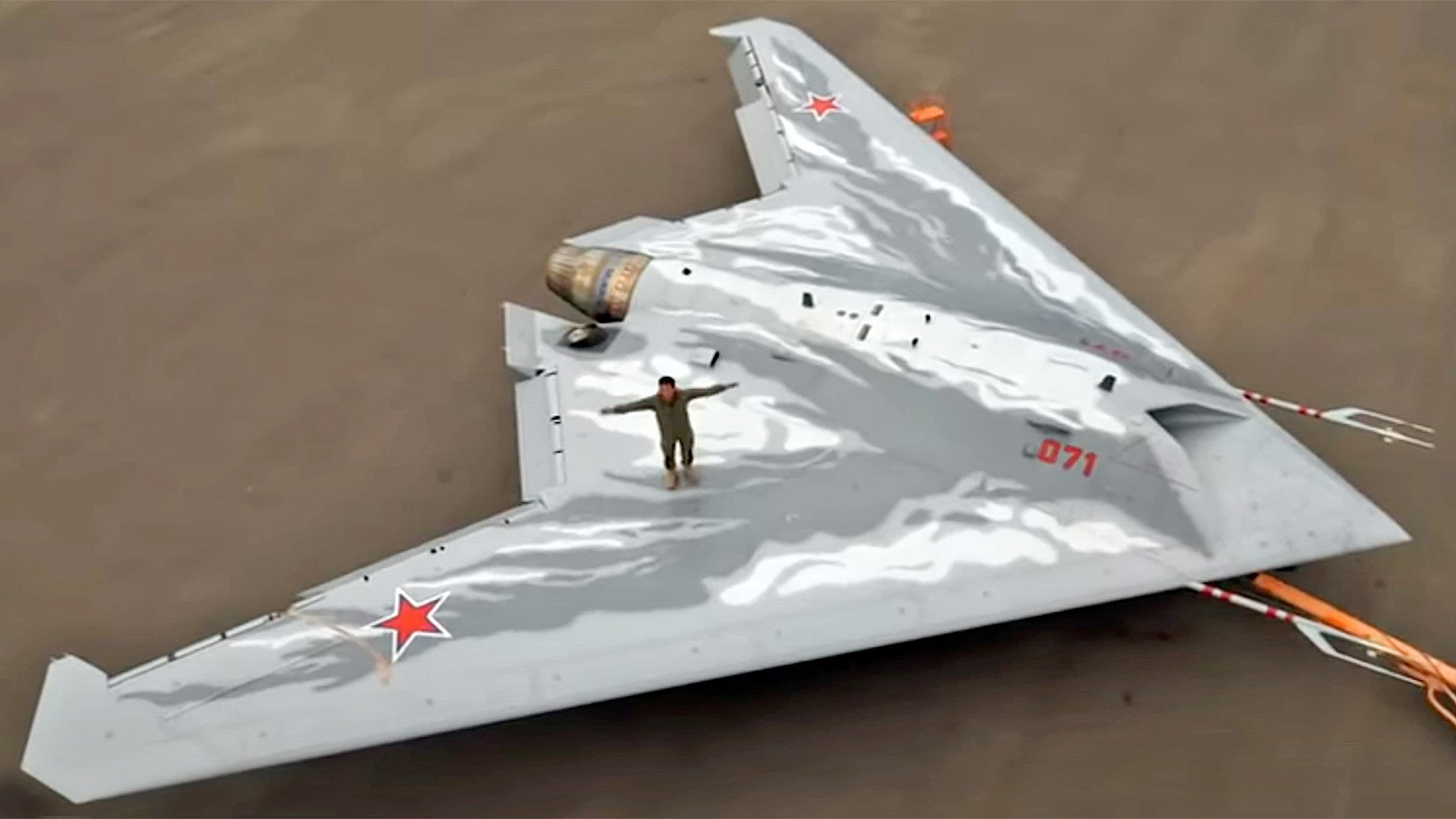
Whatever its eventual size, the Ghatak project is clearly an enormously important one that could bring a significant regional and even strategic advantage to the Indian Air Force, if realized.
Importantly, however, India is now playing serious catchup to China when it comes to developing combat drones of this type. China, which is increasingly becoming a major regional antagonist to India, already has developed the Sharp Sword stealthy flying wing UCAV, with later iterations of what the People’s Liberation Army designates the GJ-11 also featuring refined low-observable features, including a stealthier exhaust. This is not the only flying-wing combat drone developed by China, with the broadly similar CH-7 and the significantly smaller Tian Ying also having been offered for export, among others. With that in mind, India’s efforts to field a similar system may also simply be about achieving some kind of parity with China.
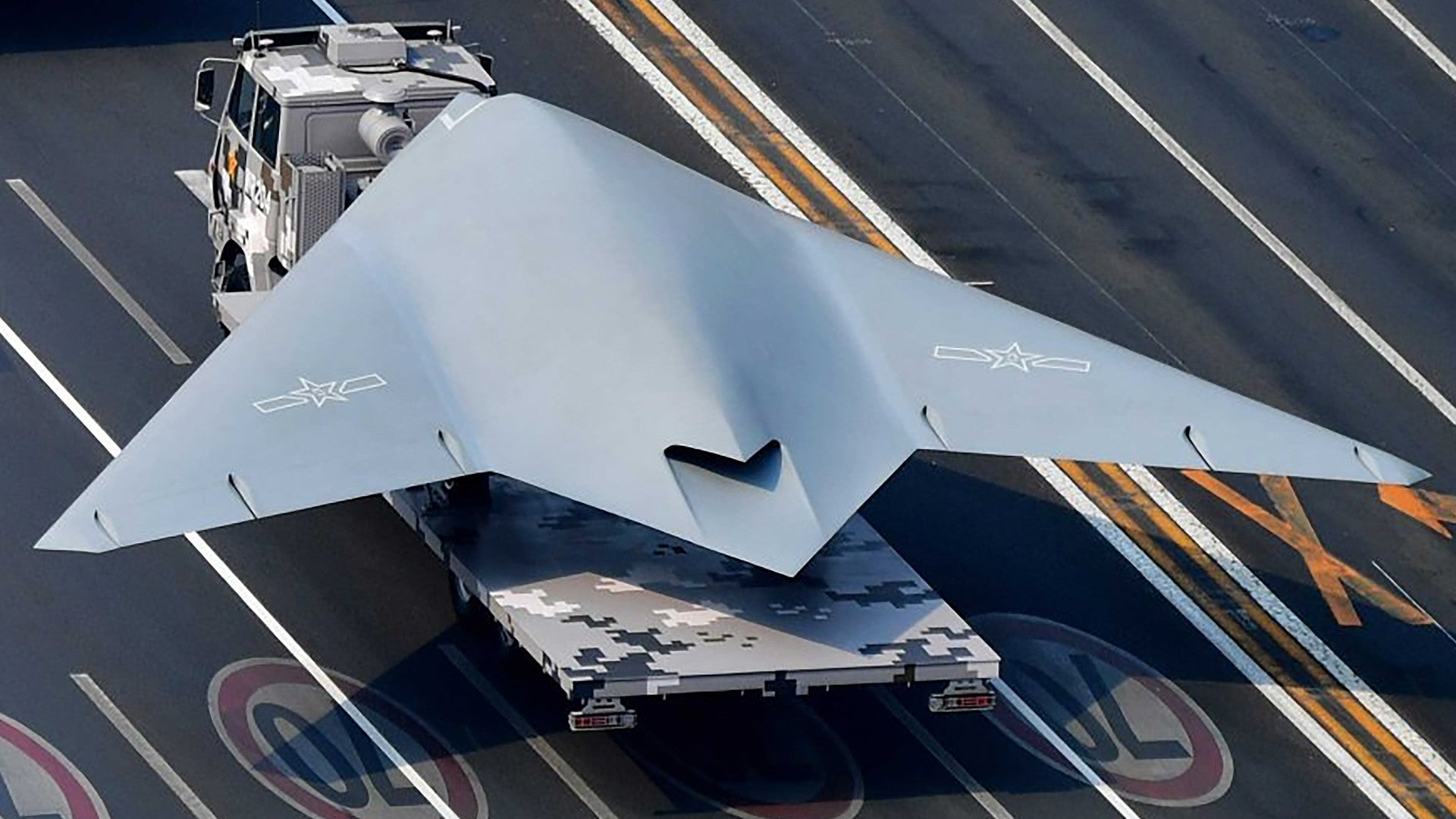
Admittedly, India has so far made limited progress in fielding indigenous drones, armed or otherwise, with the country currently primarily fielding Israeli-supplied surveillance UAVs and loitering munitions.
More recently, though, there have been concerted efforts toward developing more advanced homegrown drone technologies, including a loyal-wingman-type program, the Hindustan Aeronautics Limited (HAL) Combat Air Teaming System (CATS) Warrior.
CATS Warrior is planned as part of a family of loyal wingman aircraft and associated systems, including small swarming drones, a remote weapons carrier launched by manned fighters, and even a drone control aircraft based on the HAL Tejas fighter jet, the Mothership for Air-teaming eXploitation (MAX). While the CATS Warrior also employs a stealthy design, the Ghatak, as planned, will apparently be larger by an order of magnitude — an altogether more ambitious undertaking.
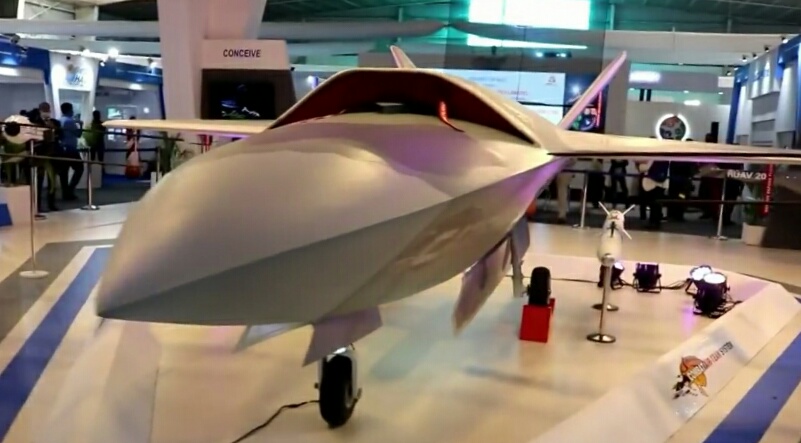
In 2018, it was predicted that the full-size Ghatak could take to the air in 2024 or 2025, but that would seem unlikely if, in fact, SWiFT just commenced taxi trials. The video could be of a past test, as well, although a date stamp indicates it was from this summer. What’s more, with a stated ambition to develop all the critical technologies for the Ghatak in India, any potential for delay is significant. As well as limited experience of indigenous combat drones of any size, India has also never previously produced a stealthy aircraft either, with earlier plans to collaborate on a version of the Russian Sukhoi Su-57 advanced fighter having been abandoned.
It had been predicted that the indigenous Kaveri engine would power the Ghatak, but with that powerplant having faced a catalog of problems and delays, a foreign engine might still emerge as a more realistic option.
There also have been reports that France’s Dassault may provide assistance for the Ghatak, perhaps leveraging the work it has already done on its nEUROn stealthy combat drone demonstrator.
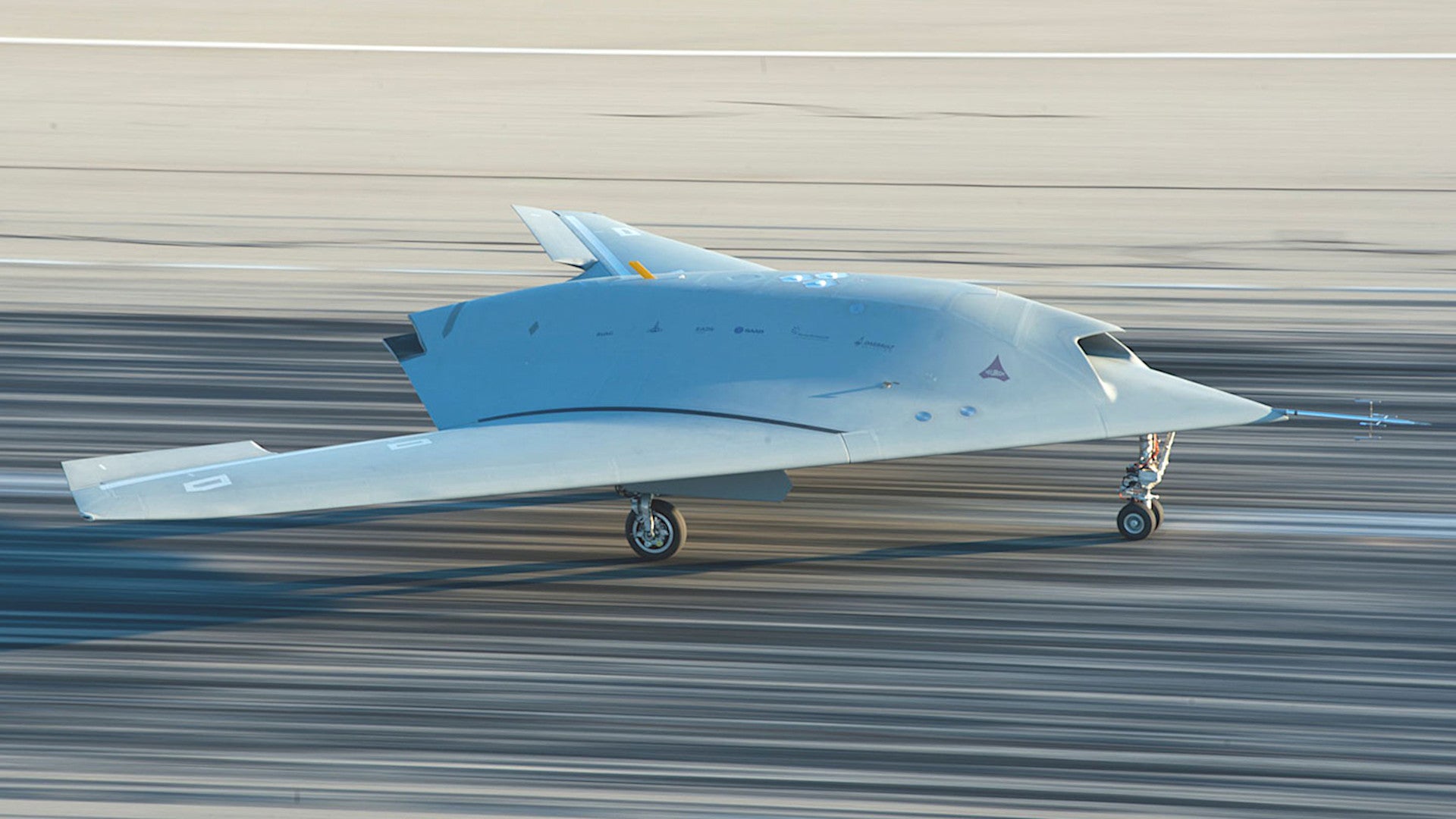
Then there is the question of budget. While a flagship “Made in India” project like this one is clearly a matter of prestige, there is a real operational need for such a system. With the growing threat posed by China, a survivable unmanned attack aircraft with a robust range could be key in dismantling air defenses and hitting critical fixed targets during the opening stages of a conflict. There is no shortage of Chinese combat mass along India’s northern border and it’s only growing with each day.
Meanwhile, the Indian Air Force is firmly focused on addressing its aging manned fighter fleet and its dwindling number of operational fighter squadrons. On top of that, the Ghatak could face competition for funds from the indigenous HAL Advanced Medium Combat Aircraft (AMCA) fifth-generation manned fighter program, which is also intended to feature stealth technologies.
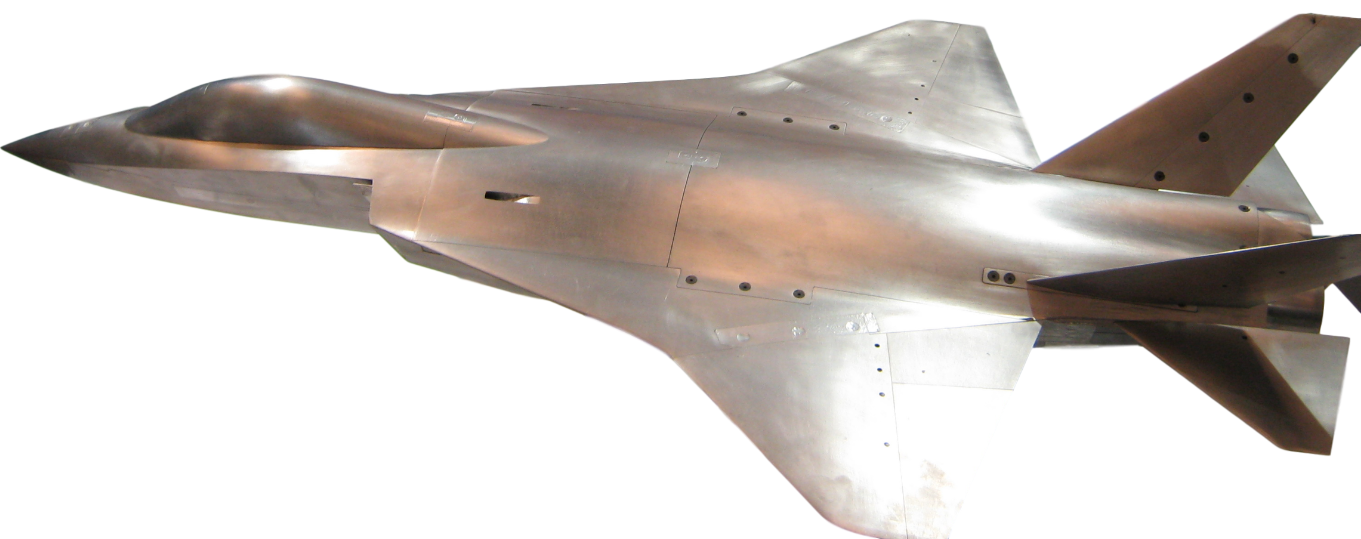
In 2018, the Ghatak program was said to be operating on “a shoe-string budget.” Two years later, it was said to be “a fully funded and sanctioned national defense project,” but the cloak of secrecy around the project means little more than that is known.
Only time will tell whether the Ghatak project results in anything approaching an unmanned bomber. In the meantime, however, the start of meaningful tests of the SWiFT demonstrator is an important step toward establishing an indigenous capacity to develop high-end combat drones of the type now proliferating in China and elsewhere.
Update, October 27: Since the publication of this article, we have reached out to experts in the Indian defense field to get their thoughts on the relationship between the SWiFT demonstrator and the production UCAV that is widely expected to follow it. The first notable point is just how secretive these projects are, with very little concrete information available in the public domain. As a result, there is plenty of rumor and conjecture overshadowing this work. A second key point about the expected size of the Ghatak UCAV is that the reports of a drone “eight times” the size of the SWiFT seem to be based on a simple misunderstanding. In fact, the production drone is likely to weigh around eight tonnes. Presuming this is a metric measurement, the resulting drone weighing 8,000 kilograms would be somewhat heavier than the Dassault nEUROn, and likely significantly smaller than the Okhotnik.
Contact the author: thomas@thedrive.com
